Impatiens glandulifera Himalayan Balsam 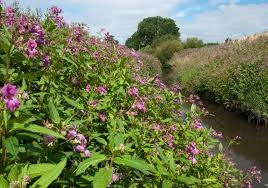 Himalayan Balsam, Impatiens glandulifera (also known as Indian Balsam, Jewelweed, kiss-me-on-the-mountain, Policeman’s Helmet) is a tall, herbaceous, annual flowering plant in the Balsaminaceae (balsam) family. The common names Policeman’s Helmet, Bobby Tops, Copper Tops, and Gnome’s Hat stand all originate from the flowers being decidedly hat-shaped. Himalayan Balsam and Kiss-me-on-the-mountain arise from the plant originating in the Himalayan mountains. It native range extends from the east Asia to the western Himalayas and south to Pakistan, it has, however, been naturalized in Britain and the USA. In its native habitat it is most typically found in shrubberies and bushy places and is often associated with grazing land.
Himalayan Balsam, Impatiens glandulifera (also known as Indian Balsam, Jewelweed, kiss-me-on-the-mountain, Policeman’s Helmet) is a tall, herbaceous, annual flowering plant in the Balsaminaceae (balsam) family. The common names Policeman’s Helmet, Bobby Tops, Copper Tops, and Gnome’s Hat stand all originate from the flowers being decidedly hat-shaped. Himalayan Balsam and Kiss-me-on-the-mountain arise from the plant originating in the Himalayan mountains. It native range extends from the east Asia to the western Himalayas and south to Pakistan, it has, however, been naturalized in Britain and the USA. In its native habitat it is most typically found in shrubberies and bushy places and is often associated with grazing land.
STRUCTURE 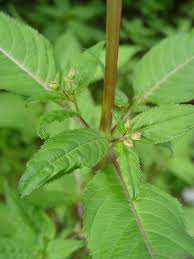 The plant is an annual, classed as succulent and glabrous (smooth and hairless) and is very hardy. Impatiens glandulifera germinates in February to March. A period of chilling at 4º C for over 45 days is necessary to break seed dormacy. Germination is epigeal and occurs relatively early giving seedlings an advantage over other plants as long as they are not exposed to frost. After 12 days the first lateral roots emerge and by 18 days these roots, the radicle, and hypocotyl greatly elongate. Within four weeks the testa is lost and the cotyledons become photosynthetically active. The first true foliage emerges as a whorl of 4 leaves, with subsequent whorls of 3. Seed sets occur about 13 weeks after flowering (Beerling & Perrins, 1993; NWCB, 2007).Typically the plants grow between 1 and 2m tall with a soft green or red-tinged stem, and lanceolate leaves 5 to 23cm long. The leaf margins are sharply serrate with 20 teeth, or more, along each side. Each leaf has a stout petiole (stem), with small, glandular stalks found at the base of these petioles. When crushed, the leaves have a strong musty smell. The flowers develop between June and October and these are pink, with a distinctive hooded shape. They are typically about 3cm tall and 2cm broad and each plant develops several solitary flowers on an elongated axillary stalk.
The plant is an annual, classed as succulent and glabrous (smooth and hairless) and is very hardy. Impatiens glandulifera germinates in February to March. A period of chilling at 4º C for over 45 days is necessary to break seed dormacy. Germination is epigeal and occurs relatively early giving seedlings an advantage over other plants as long as they are not exposed to frost. After 12 days the first lateral roots emerge and by 18 days these roots, the radicle, and hypocotyl greatly elongate. Within four weeks the testa is lost and the cotyledons become photosynthetically active. The first true foliage emerges as a whorl of 4 leaves, with subsequent whorls of 3. Seed sets occur about 13 weeks after flowering (Beerling & Perrins, 1993; NWCB, 2007).Typically the plants grow between 1 and 2m tall with a soft green or red-tinged stem, and lanceolate leaves 5 to 23cm long. The leaf margins are sharply serrate with 20 teeth, or more, along each side. Each leaf has a stout petiole (stem), with small, glandular stalks found at the base of these petioles. When crushed, the leaves have a strong musty smell. The flowers develop between June and October and these are pink, with a distinctive hooded shape. They are typically about 3cm tall and 2cm broad and each plant develops several solitary flowers on an elongated axillary stalk.
Individual plants reaching 2m in height, have translucent fleshy stems, pink-purple slipper-shaped flowers and large oval pointed leaves with obvious teeth around their edges. Each tooth carries a small globular ‘gland’ and produces large numbers of flowers which are followed by typically five chambered‘seed pods’ about 25mm long and 8mm broad.
When mature and dry, the fruits split open explosively if touched, flinging the seeds a considerable distance (up to 7 metres) from the parent plant. After pollination (the flowers are very attractive to bees), the seed pods form. The seeds are small (2 to 4mm) and teardrop shaped. They range from very pale when immature through green to almost black when ripe.
The ripe seeds are light and float on water. When crushed the foliage emits a strong musky scent. Indeed, the name Impatiens (impatient) refers to this seed dispersal method. . The species name glandulifera comes from the Latin words glandis meaning ‘gland’, and ferre meaning ‘to bear’, in that the plant has glands that produce a sticky, sweet-smelling, and edible nectar. HISTORY IN THE UK In the UK the plant was first introduced in 1839 at the same time as Giant Hogweed and Japanese Knotweed. These plants were all promoted at the time as having the virtues of “herculean proportions” and “splendid invasiveness” which meant that ordinary people could buy them for the cost of a packet of seeds to rival the expensive orchids grown in the greenhouses of the rich. Within ten years, however, Himalayan balsam had escaped from the confines of cultivation and begun to spread along the river systems of England. Today it has spread across most of the UK and some local wildlife trusts organise “balsam bashing” events to help control the plant. However, a recent study (Hejda & Pyšek, 2006) concludes that in some circumstances, such efforts may cause more harm than good. They are now classed as an invasive species as their rapid growth and easy spread means that they easily out-compete native plants, particularly on disturbed ground, cleared ground and riverbanks. The small size of the seeds, the explosive nature of the seed pods and the buoyancy of the seeds means that they are easily distributed, particularly if growing by streams and riverbeds. The species is particularly frequent along the banks of watercourses, where it often forms continuous stands. It can also establish in damp woodland, flushes and mires. It is the tallest annual (species of plant that completes its life cycle in one year) in Britain and due to its rapid growth, it shades out most of our native species. Each plant produces about 2,500 seeds which fall to the ground, and with several parent plants close together, seeds can occur at a density of between 5000-6000 seeds per square metre. Since the seeds float, watercourses are a prime route for dispersal of the species. Seeds can also begin to germinate in water on their way to new sites. Himalayan balsam has been identified as one of the highest risk (most unwanted) non-native invasive species in Britain. This is largely due to its impact on native waterside vegetation within designated sites.
PROBLEMS OF HIMALAYAN BALSAM
Since the species is rapidly expanding its range, a major concern is Himalayan balsam will dominate waterside vegetation and damp ground, at the expense of native species. There appears to be no direct detrimental impact on animal life. However, recent research suggests it competes for pollinators such as bumblebees with the native riverbank species, and so reduces seed set in these other plants. If this species is growing in an adjacent site, or upstream of a site on a riverbank, then no matter how good on-site control is, re-colonisation is likely. The Balsam dies back from October onwards, exposing the now bare bank-sides to erosive winter flows and floods. Soil erosion from winter flows is damaging to spawning fish (lamprey and salmon). .An understanding of the wider area is necessary to determine if eradication or control efforts are likely to be successful. In some situations, eradication of all Himalayan balsam on site might not be possible due to the likelihood of re-colonisation. Work in partnership with neighbouring landowners to tackle Himalayan balsam . Himalayan Balsam is sometimes cultivated for its flowers. The aggressive seed dispersal, coupled with high nectar production which attracts pollinators, often allows the Himalayan Balsam to outcompete native plants.. Destroying riparian stands of Himalayan Balsam can open up the habitat for more aggressive invasive plants such as Japanese knotweed and aid in seed dispersal (by dropped seeds sticking to shoes). Riparian habitat is suboptimal for I. glandulifera, and spring or autumn flooding destroys seeds and plants. The research suggests that the optimal way to control the spread of riparian Himalayan Balsam is to decrease eutrophication, thereby permitting the better-adapted local vegetation that gets outgrown by the balsam on watercourses with high nutrient load to rebound naturally. They caution that these conclusions do probably not hold true for stands of the plant at forest edges and meadow habitats, where manual destruction is still the best approach. Himalayan balsam is known to reduce native plant diversity with some figures estimated a loss of about a third. This effect can be detected at both small and riverbank scales. It is possible to successfully control or eradicate Himalayan balsam from infested sites. However, while removal of Himalayan balsam increases plant diversity, the species that respond most dramatically are other non-native plants. Small infestations (most common in gardens) can easily be controlled by hand-pulling as the species is shallow rooted. Padded gloves should be worn to avoid risk of injury to hands. Seeds are not very robust and only survive for up to 18 months so a two year control programmes can be successful in eradicating this plant if there is not further infestation from upstream or adjacent sites.
CHEMICAL CONTROL OF HIMALAYAN BALSAM
Chemical control Himalayan balsam can be controlled by spraying the foliage with glyphosate. The plants should be sprayed in the spring before flowering but late enough to ensure that germinating seedlings have grown up sufficiently to be adequately covered by the spray. Glyphosate is sold under a number of brand names. Small infestations and individual plants can be controlled by using glyphosate in a weed wiper. This has the advantage of preserving native plants and grasses which would otherwise be killed by the glyphosate. The herbicide 2,4-D amine controls many broadleaved annual weeds and may also be used to control this species but is not recommended for use near watercourses. This selective herbicide will not kill grasses. It may be preferable to glyphosate in situations where the weed has not reduced complete cover of the grasses. A long-lance sprayer may assist in the spraying of less accessible areas out of the reach of conventional knapsack sprayers.
BIOLOGICAL CONTROL OF HIMALAYAN BALSAM
A rust fungus specific to Himalayan Balsam is to be released at locations in Berkshire, Cornwall and Middlesex as part of field trials to control the non-native, invasive weed Himalayan balsam (Impatiens glandulifera) using natural means. The release of the rust fungus comes after an eight-year research programme funded primarily by Defra and the Environment Agency, with contributions from Network Rail, the Scottish Government and Westcountry Rivers Trust. During the course of the research, testing in quarantine laboratories has established that the rust fungus causes significant damage to Himalayan balsam and does not impact on native species.
USES OF HIMALAYAN BALSAM
The green seed pods, seeds, young leaves and shoots are all edible.The young shoots and stems are edible, when cooked, but care should be taken as they contain high concentrations of calcium oxalate (which is broken down and leached out on cooking) but it is recommended that they are not consumed too frequently. Immature seed pods (before they reach the ‘explosive’ stage) are edible whole, and can be cooked like radish pods or mangetout (snow peas) and used in stir-fries and curries. The seeds themselves can be eaten raw and have a nutty taste that is variously described as being like hazelnuts or walnuts. The best way to collect the seeds is to enclose the seed pod in a bag and then pinch it off (this way, when the pods explode the seeds are not dispersed). Seeds can be toasted and ground to make flower, crushed and used as a spice or substituted in any recipe that calls for hazelnuts. They are excellent baked in cakes, breads and biscuits and make a welcome addition to stews and curries (a traditional use in Northern India). When collecting the seeds, you need not be too particular in removing all bits of the seed pods that you collect with them as the pods are edible. The seeds require a period of cold to activate from dormancy, as a result mature seeds (if carefully picked over) can be stored in an air-tight jar as a store-cupboard standby. They are useful for substituting in cakes instead of nuts for those with nut allergies and ground Himalayan balsam seeds can be substituted for ground almonds. The flowers can also be used to make floral jams and jellies.
USING HIMALAYAN BALSAM IN ORDER TO CONTROL IT
Himalayan Balsam at Bank Hall, Bretherton, Lancashire, England The Bionic Control of Invasive Weeds in Wiesbaden, Germany, is trying to establish a self-sufficient project to conserve their local biodiversity by developing several food products made from the Impatiens flowers. Eventually, if all goes well, this project will have the Himalayan Balsam financing its own eradication. “The Plant List: A Working List of All Plant Species”. Retrieved April 7, 2014. Jump up ^ Webb, D.A., Parnell, J. and Doogue, D. 1996. An Irish Flora. Dundalgan Press (W.Tempest) Ltd. Dundalk Scott, R. 2004. Wild Belfast on safari in the city. Blackstaff Press. ISBN 0 85640 762 3 Scannell, M.J.P. and Synnott, D.M. 1972. Census Catalogue of the Flora of Ireland. Dublin. Published by the Stationery Office. Hackney, P. (Ed)1992. Stewart & Corry’s Flora of the North-East of Ireland. The Institute of Irish Studies, The Queen’s University of Belfast. ISBN 0 85389 446 9 a b c Mabey, Richard; Produced by Susan Marling (Broadcast 25 July 2011), Mabey in the wild: Indian Balsam, A Just Radio Production, retrieved 24 July 2011 Check date values in: |date= (help) “Wanted!: Himalayan Balsam”. British Isles: A Natural History. The Open University. Retrieved 4 December 2009. “Alberta Invasive Plant Identification Guide”. Wheatland County, Alberta. 2012. Retrieved 9 June 2013. http://www.aka.fi/Tiedostot/Viksu/2012ty%C3%B6t/Sofia%20Mononen%20kilpailuty%C3%B6.pdf “Himalayan Balsam”. Royal Horticultural Society. Retrieved 2 June 2014. “Information Sheet 3: Himalayan Balsam”. Centre for Ecology and Hydrology: Centre for Aquatic Plant Management. Retrieved 2 June 2014. “Natural Resources Wales winning war against Ystwyth’s invader”. Natural Resources Wales. 2013. Retrieved 2 June 2014. • • http://www.celtnet.org.uk/recipes/ancient/wild-food-entry.php?term=Himalayan%20Balsam •
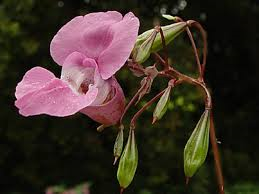
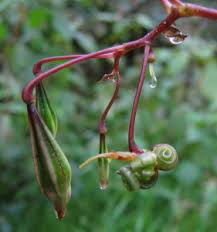
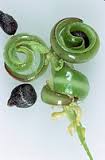
Hello. I would like to use some of the photo images from this blog in a non-native species training document (internal training at work), and would like to credit the photographer/s.
Please could you send me the relevant details, or consent to credit ‘Changinglifestyleblog’ as the owner of the photographs.
Many thanks
Clare
LikeLike
You are welcome to use anything from my blog. I just enjoy researching about things and sharing interesting information
LikeLike